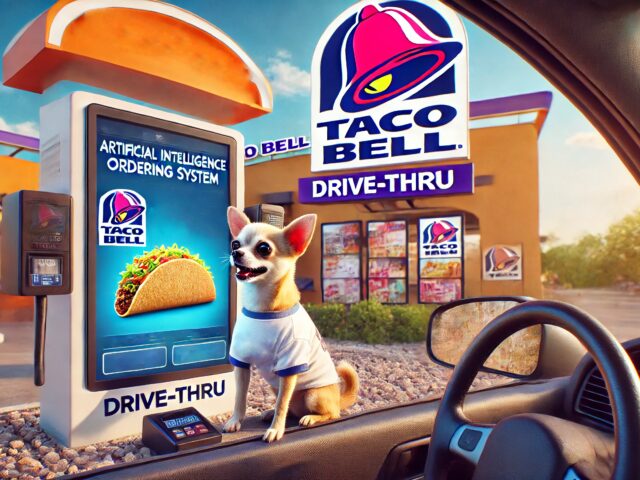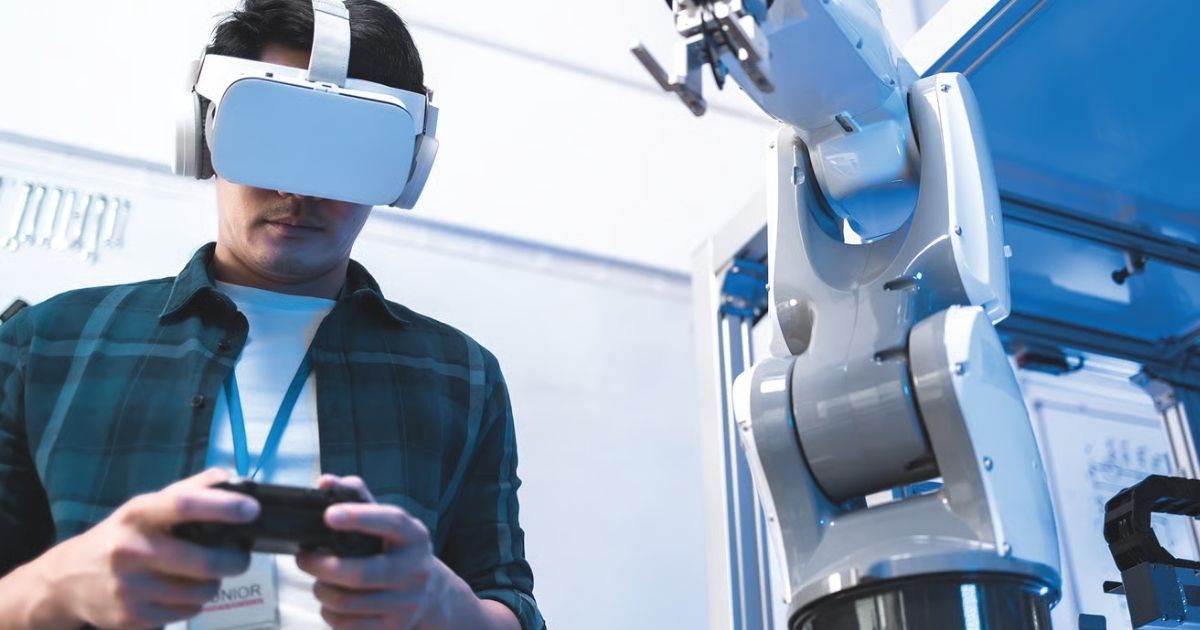The fast-food industry has always been at the forefront of technological innovation, seeking ways to improve efficiency and customer satisfaction. One of the latest advancements in this sector is the implementation of Voice AI technology in drive-thrus.
Taco Bell, under its parent company Yum! Brands are making significant strides in this area. Having tested this technology for two years at over 100 locations, Yum! Brands now aim to expand it to hundreds more Taco Bell stores across the United States by the end of 2024. This article delves into the details of this ambitious project, exploring its potential benefits, challenges, and implications for the future of fast food.
The Emergence of Voice AI in Fast Food
A Brief History
.jpg)
Voice AI technology has been steadily making its way into various industries, with fast food being a prime candidate for its application. The idea is simple: use advanced speech recognition and artificial intelligence to take orders from customers, thus streamlining the ordering process.
Early Adopters
Several fast food chains have experimented with Voice AI in their drive-thrus. Wendy's and McDonald's are notable examples. Wendy's reported improvements in efficiency, while McDonald's faced challenges, leading to a scaling back of their AI plans. These mixed results set the stage for Taco Bell's cautious yet optimistic approach.
Yum! Brands' Vision for Taco Bell

Goals and Objectives
Yum! Brands' primary goals with the Voice AI technology are to ease the workload on staff, improve order accuracy, and reduce wait times. By achieving these objectives, the company hopes to boost profits not only for Taco Bell but also for Yum! Brands and its franchisees.
Expansion Plans
Currently, the Voice AI technology is in use at over 100 Taco Bell locations in the US. The plan is to expand this to hundreds more by the end of 2024. Additionally, Yum! Brands is piloting the technology at five KFC locations in Australia, indicating a broader vision for Voice AI across its portfolio of brands.
Benefits of Voice AI in Drive-Thrus
.jpg)
Easing Staff Workload
One of the significant advantages of Voice AI is its potential to reduce the workload on staff. Taking orders can be a repetitive and high-pressure task, especially during peak hours. By automating this process, employees can focus on food preparation and customer service, areas where human interaction is still crucial.
Improving Order Accuracy
Order accuracy is a perennial issue in the fast food industry. Miscommunication between customers and staff can lead to incorrect orders, causing delays and dissatisfaction. Voice AI, with its precise speech recognition capabilities, can minimize these errors, ensuring customers receive exactly what they ordered.
Reducing Wait Times
Speed is of the essence in fast food, and long wait times can deter customers. By streamlining the ordering process, Voice AI can significantly reduce wait times, making the drive-thru experience faster and more efficient.
Boosting Profits
Ultimately, the goal of implementing Voice AI is to enhance profitability. By improving efficiency and customer satisfaction, Taco Bell can attract more customers and increase sales. The technology also has the potential to reduce labor costs, contributing to higher profit margins.
Challenges and Considerations

Technical Hurdles
Despite its potential, Voice AI technology is not without its challenges. Speech recognition must be highly accurate to function effectively, and background noise in drive-thrus can complicate this. Moreover, the AI needs to understand various accents, dialects, and languages to cater to a diverse customer base.
Customer Acceptance
Introducing new technology can sometimes be met with resistance from customers accustomed to traditional ordering methods. Ensuring a smooth and user-friendly experience is crucial for gaining customer acceptance.
Ethical and Employment Implications
The implementation of AI in drive-thrus also raises ethical questions regarding employment. While the technology aims to ease staff workload, there is a concern that it might reduce the need for human workers, potentially leading to job losses.
Comparing with Competitors
.jpg)
Wendy's Experience
Wendy's has seen positive results from its AI-driven drive-thru systems. The company reported improvements in order accuracy and reduced wait times, validating the potential benefits of the technology.
McDonald's Setback
In contrast, McDonald's faced significant challenges with its AI systems, leading to a rollback of their plans. Issues such as inaccurate orders and customer dissatisfaction highlighted the importance of refining the technology before widespread implementation.
Taco Bell's Approach
Taco Bell's approach appears to be more measured and strategic. By testing the technology extensively before a broader rollout, the company aims to learn from the experiences of its competitors and avoid similar pitfalls.
The Future of Fast Food Ordering
Expansion Beyond Taco Bell
Yum! Brands' pilot of Voice AI at KFC locations in Australia suggests that the company sees potential for this technology across its various brands. If successful, we can expect to see Voice AI being implemented at more KFC locations and possibly at Pizza Hut and other Yum! Brands restaurants.
Integration with Other Technologies
The future of fast food ordering may involve integrating Voice AI with other technologies such as mobile apps and self-service kiosks. This multi-channel approach can provide customers with various convenient options for placing their orders.
Long-Term Implications
In the long term, the adoption of AI in fast food could lead to a significant transformation of the industry. Enhanced efficiency, reduced labor costs, and improved customer experiences could become the norm, setting new standards for what customers expect from fast food restaurants.
Check out the alternative option here >>>> Verbaltik <<<<
Final Thoughts
The introduction of Voice AI technology in Taco Bell's drive-thrus represents a significant step forward in the fast food industry. By easing staff workload, improving order accuracy, and reducing wait times, this technology has the potential to revolutionize the way customers interact with fast food chains.
However, the journey is not without its challenges. Technical hurdles, customer acceptance, and ethical considerations must be carefully navigated to ensure successful implementation. As Yum! Brands move forward with its plans, the fast food industry will be watching closely, ready to learn and adapt to this exciting new development.








.jpg)






